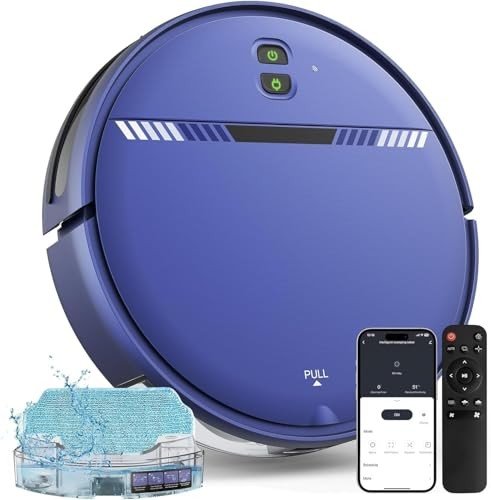
Robot Floor Cleaner
FollowOverview
-
Sectors Project Management
-
Posted Jobs 0
Company Description
Floor Robot: It’s Not As Expensive As You Think

Understanding Floor Robots: The Future of Home Cleaning
Over the last few years, technological developments have substantially changed the landscape of household cleaning. Amongst the most noteworthy innovations is the floor robot, a gadget that has actually quickly acquired appeal for its convenience and efficiency. This post aims to check out the different aspects of floor robots, their functionality, benefits, popular models, and some frequently asked questions to assist customers make informed choices.
What is a Floor Robot?
A floor robot, commonly referred to as a robotic vacuum, is an automated device developed to browse floors and eliminate dirt, dust, and debris. Unlike conventional vacuum cleaners, floor robots operate autonomously, providing a problem-free cleaning experience. These smart machines use sensing units, mapping innovations, and advanced algorithms to tidy different surfaces, consisting of hardwood, tile, and carpet.

How Do Floor Robots Work?
Floor robots operate through a combination of hardware and software elements. Here are the essential features that enable their performance:
1. Sensors
- Obstacle Detection: Floor robots have built-in sensors that assist them identify challenges, permitting them to navigate around furnishings and avoid falls.
- Cliff Sensors: These avoid the robot from falling down stairs or ledges by acknowledging modifications in elevation.
2. Navigation and Mapping
- Visual Mapping: Some sophisticated models utilize cameras and laser innovation to develop detailed maps of the cleaning area.
- Synchronised Localization and Mapping (SLAM): This technique helps the robot track its area and successfully plan its cleaning route.
3. Cleaning Mechanisms
- Suction Power: Most robotic vacuums use a suction system to capture dirt and dust, which is then stored in an onboard dustbin.
- Brushing Systems: Many models come equipped with turning brushes or mops for boosted cleaning capabilities, particularly on carpets or tough surfaces.
4. Smart Features
- Connection: Many floor robots support Wi-Fi connection, allowing users to control them by means of mobile phone apps or smart home systems.
- Scheduling: Users can schedule cleaning times, ensuring their homes are tidy even when they’re not there.
5. Autonomous Charging
- Self-Docking: Most robots immediately return to their charging station once their battery runs low, ensuring they’re constantly all set to clean.
Benefits of Using a Floor Robot
The adoption of floor robots comes with numerous advantages that make them attracting users:
1. Convenience
Floor robots can clean while users take care of other tasks, allowing for multitasking and time-saving.
2. Increased Efficiency
Robotic vacuums frequently cover more ground in less time compared to traditional methods, robotvacuummops thanks to their systematic cleaning patterns.
3. Consistent Cleaning Routine
Users can schedule regular cleanings, guaranteeing that their homes remain clean without requiring daily intervention.
4. Availability
Robotic vacuums can quickly access hard-to-reach areas, such as under furniture or in tight areas.
5. Advanced Features
Numerous designs come equipped with functions like voice control and app combination, enhancing use and availability.
Popular Floor Robots
When considering a floor robot, numerous brand names and models accommodate different requirements and spending plans. Here’s a brief summary of some leading options:
| Brand | Model | Key Features | Price Range |
|---|---|---|---|
| iRobot | Roomba i7+ | Smart mapping, self-emptying dock | ₤ 600 – ₤ 800 |
| Roborock | Roborock S7 | Sonic mopping, barrier avoidance | ₤ 500 – ₤ 700 |
| Neato | Neato D7 | D-shape style, advanced suction | ₤ 600 – ₤ 800 |
| Ecovacs | Ecovacs Deebot T8 | Mopping function, advanced mapping | ₤ 600 – ₤ 800 |
| Shark | Shark IQ Robot | Self-emptying base, home mapping | ₤ 400 – ₤ 600 |
(Note: Prices may vary based on sellers and continuous promos.)
Regularly Asked Questions (FAQs)
1. Are floor robots effective on carpets?
Yes, a lot of contemporary floor robots are developed to tidy numerous surface areas, including carpets. Designs with strong suction and rotating brushes are especially reliable at choosing up pet hair and ground-in dirt.
2. How often should I run my floor robot?
This depends upon your household’s requirements. For homes with animals or high foot traffic, daily or every other day cleaning might be useful. For quieter households, running the robot as soon as a week might be enough.
3. Can I manage my floor robot from another location?
Numerous floor robots come with smart device apps that enable users to manage their gadgets remotely, schedule cleanings, and monitor performance.
4. Do I need to clear the dustbin often?
Many robots require routine emptying of the dustbin, especially in homes with family pets or heavy soil. However, some models provide self-emptying abilities, which decrease user participation.
5. Are floor robots appropriate for all types of flooring?
Many floor robots work on different surfaces, including wood, tile, and low-pile carpets. Nevertheless, some may perform better on specific surface areas, so it’s necessary to choose a design fit to your home’s needs.
As households continue to accept technology, floor robots have actually emerged as vital cleaning buddies, providing convenience, efficiency, and advanced features. Comprehending their functionalities, benefits, and readily available models enables consumers to choose the ideal floor robot to meet their particular cleaning requirements. By buying this ingenious innovation, homeowners can guarantee their home stay clean and comfy with minimal effort.
